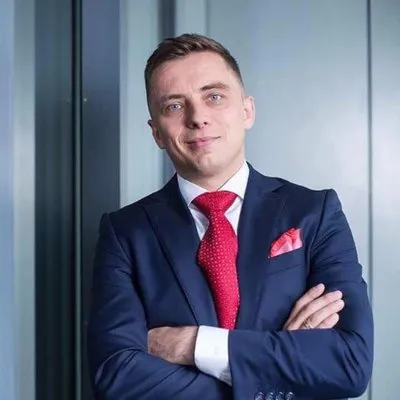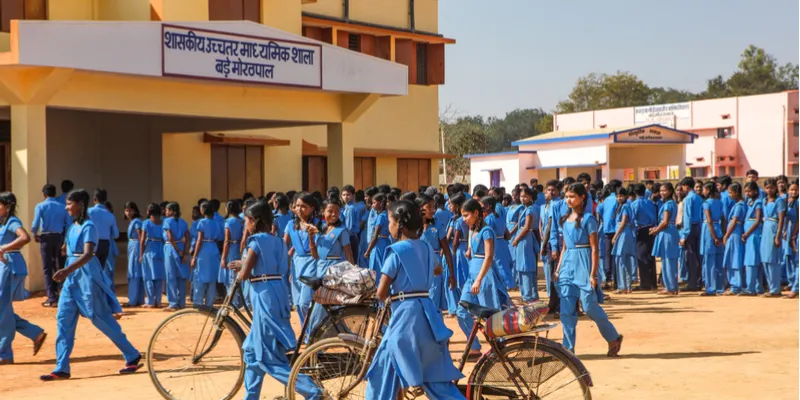How Polish edtech startup Brainly notched up 15 million users in India in 2 years
Brainly, which claims to be the world’s largest social learning community for students, aims to expand in India by focusing on vernacular content.
India’s edtech ecosystem, ruled by the likes of BYJU’s, UpGrad, Simplilearn, Toppr, Vedantu, Great Learning, and Unacademy, has raised millions of dollars in VC funding over the past five years. But it’s not only Indian startups that are keen to take a bite out of the $215 billion education pie in the country; international platforms are also eyeing a slice. In fact, Poland-based startup Brainly has quietly been making waves over the past two years.

Michal Borkowski, Co-founder and CEO of Brainly.
Brainly was founded by Michal Borkowski, Lukasz Haluch, and Tomasz Kraus in Krakow in 2009. The startup has raised $38.5 million (the most recent round being Series B) from seven investors, including Naspers (it also funded India’s first edtech unicorn BYJU’s).
Catching up with YourStory in Bengaluru, Co-founder and CEO Michal recollects that it was a different world when Brainly was launched, with not many global edtech companies, and little investment from VCs. The entrepreneur trio, however, was willing to risk it all.
Michal, who has a degree in corporate finance, recounts, “My parents, who were small-scale entrepreneurs, encouraged me to take risks.
Their motto was: if you are facing a tough decision, fast forward five years. Even if you fail, would you prefer to fail and learn, or never to take the risk?”
The decision to take the risk seems to have paid off. Brainly is now present in over 35 countries, with more than 150 million active users. It claims to be the world’s largest social learning community for students.
In India, Brainly has more than 15 million active users, the same as India’s first and only edtech unicorn BYJU’s. Brainly says it has witnessed 200 percent annual growth since it entered India in 2016, and claims to be the number one education website in India in terms of number of visits it gets. Indian students who use the platform comprise 42 percent secondary and 39 percent higher secondary grade students. However, Brainly is not monetising in India right now. Michal stresses,
“We are in the growth stage; we want to reach every student in the world, and India specifically. We are not focusing on profit; we are still working on our business model.”
In Asia, Brainly is also present in Indonesia and Philippines, two countries that Michal claims have great push for education and a sizeable population to scale up.
How Brainly works
Brainly aims to help students with curriculum-related, specific questions, unlike most edtech startups in India that focus on test preparations and personalised learning programmes. Students connect to their peers to help strengthen their skills, from mathematics and science to history and more.
Michal reminisces that as a teenager, he found essays hard to write, but was too embarrassed to ask for help. “It was frustrating for me. In the online world, the process is much easier.”

Lukasz Haluch, Co-founder of Brainly, is a serial entrepreneur and angel investor.
A question from a student of Class 10 can be answered by another 10th grader or a 12th grader. Michal claims students all over the world have one common trait – they help each other in doing homework and answering each other’s doubts.
“By engaging students into that collaboration online, we take every question and answer, and store it in our knowledge base. So in a way, we are extracting the smartness of every child who uses Brainly. We make it accessible to everyone, no matter where they are or how much money they have,” he adds.
To ensure the quality of interactions and accuracy of answers, Brainly moderates all the content with their own algorithm. Users can also rate the answers.
In addition, experts also review the knowledge base to check the quality. If they are not satisfied with the quality of the answer, they ask the person who gave that answer to improve it (with explanation). If there is still no improvement, Brainly removes that answer from the database, Michal says.
India’s push for education
India focuses greatly on education in general, which means the rise of edtech companies is not surprising. Michal says Brainly has been looking at the India market since 2014.
“The market is huge in India. People here are more willing to pay for education compared to most other markets; the highest spends from parents’ salaries often go into their children’s education. There is huge pressure on students to succeed. Using Brainly expands their knowledge and reduces frustration,” he points out.
In Brainly’s survey of more than 10,000 users in India (in January 2019), more than 50 percent students said their schools were not helping them enough to prepare for their careers and the real world, and hence they needed additional resources. They were striving to attain a deeper understanding of subjects, and more than 40 percent respondents started using Brainly to go beyond homework assignments. Around 12 percent students claimed that they started using Brainly because their grades were suffering and they needed additional support.

Brainly is a peer-to-peer platform where students can help each other online. (Image: Shutterstock)
Brainly had also asked what sources of information are referred to by teachers – digital or offline. Apparently, digital is picking up now. “Our users in Bangalore are using us almost every day. The most popular subject among Indian users is maths,” Michal tells YourStory.
Plan for India
Brainly’s strategy is to build the student community and work on the content to ensure best quality. But India poses many challenges. For instance, internet penetration is still poor in some areas outside metro cities. Michal says their engineering team, comprising 65 people, is constantly working to ensure that their app runs well and fast even in areas without 4G.
On the other hand, Michal claims Brainly had to spend little on marketing in India. “We did some digital marketing to gain visibility initially. But our growth is mostly organic. Students often refer us to each other; sometimes they search for information online and then they find us. The bigger the knowledge base gets, more people come in,” he says.
Since schools in India do not follow one unified syllabus, Brainly does not follow a specific curriculum. The company wants to have the highest coverage of all school subjects.

In a multi-lingual society like India, regional language content is essential for the penetration of online education platforms. (Image: Shutterstock)
Venturing beyond English speakers
The majority of Brainly’s current user base in India is English speaking. As part of their expansion plan in India, they have launched in Hindi, and will soon launch in Bengali and Kannada.
Michal explains the strategy. “Giving content in local language is central in education. We take into account the size of that particular language-speaking community, popularity of the language, and internet penetration in the region of those language users, so that we can scale up.”
But home tutoring is the norm among school children in India. Can Brainly beat this competition with local language content? Michal says that for offline interactions (like home tutoring), the cost is higher since the student or the teacher needs to travel. “With tech, you can create a knowledge base, and give access to students free of cost,” he remarks.
Even though they make tutoring jobs obsolete, Michal feels that tech platforms like Brainly improve the quality of education. He elaborates, “Students routinely have to attend home tutoring after school, then do homework for school, and study on their own for understanding the topic. We make that learning more efficient by helping them understand topics faster.”
Michal hopes that one day “Brainly” will replace the word “Brainy”. “When a student is smart, he is a Brainly one!” he says.







